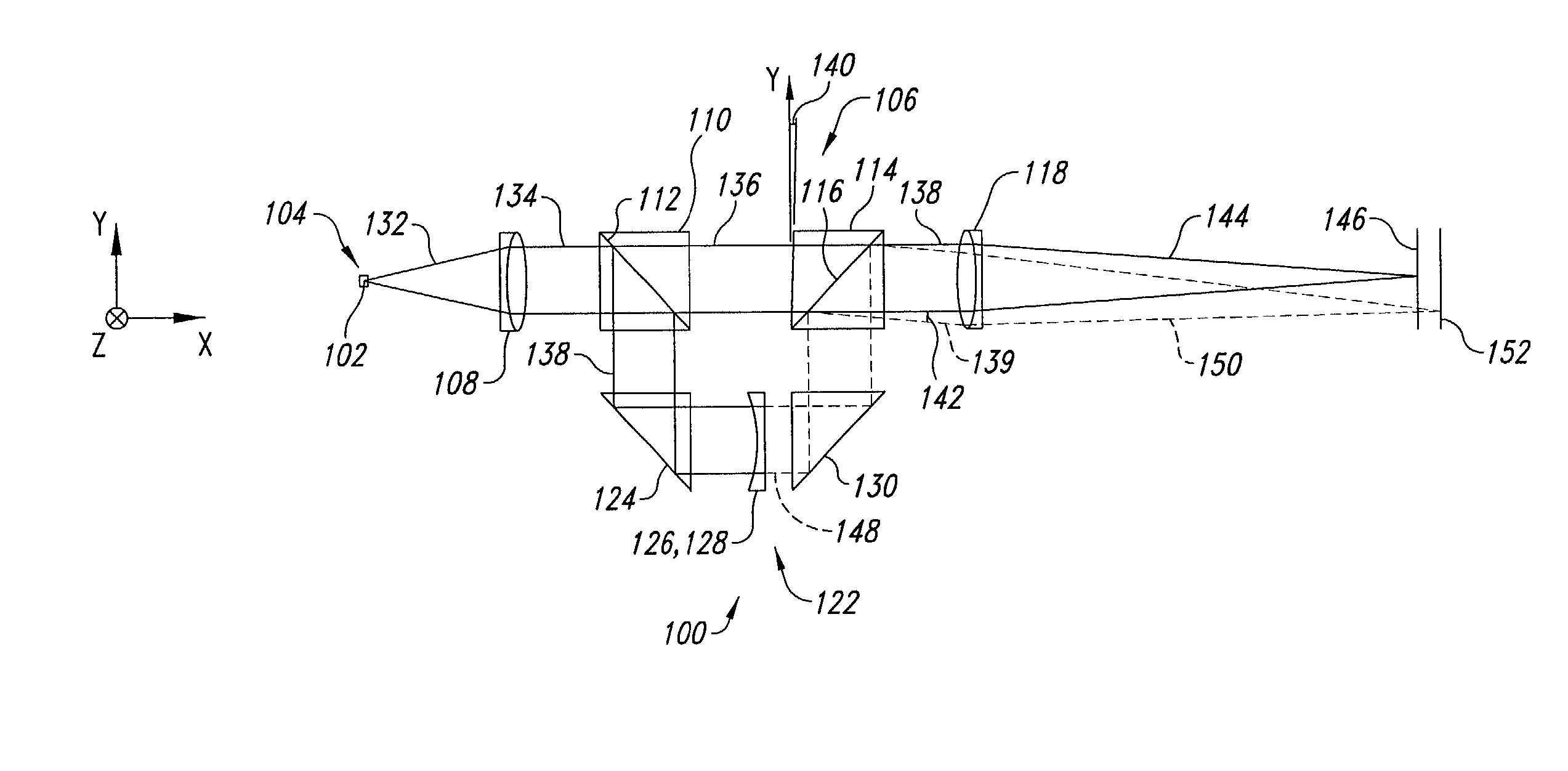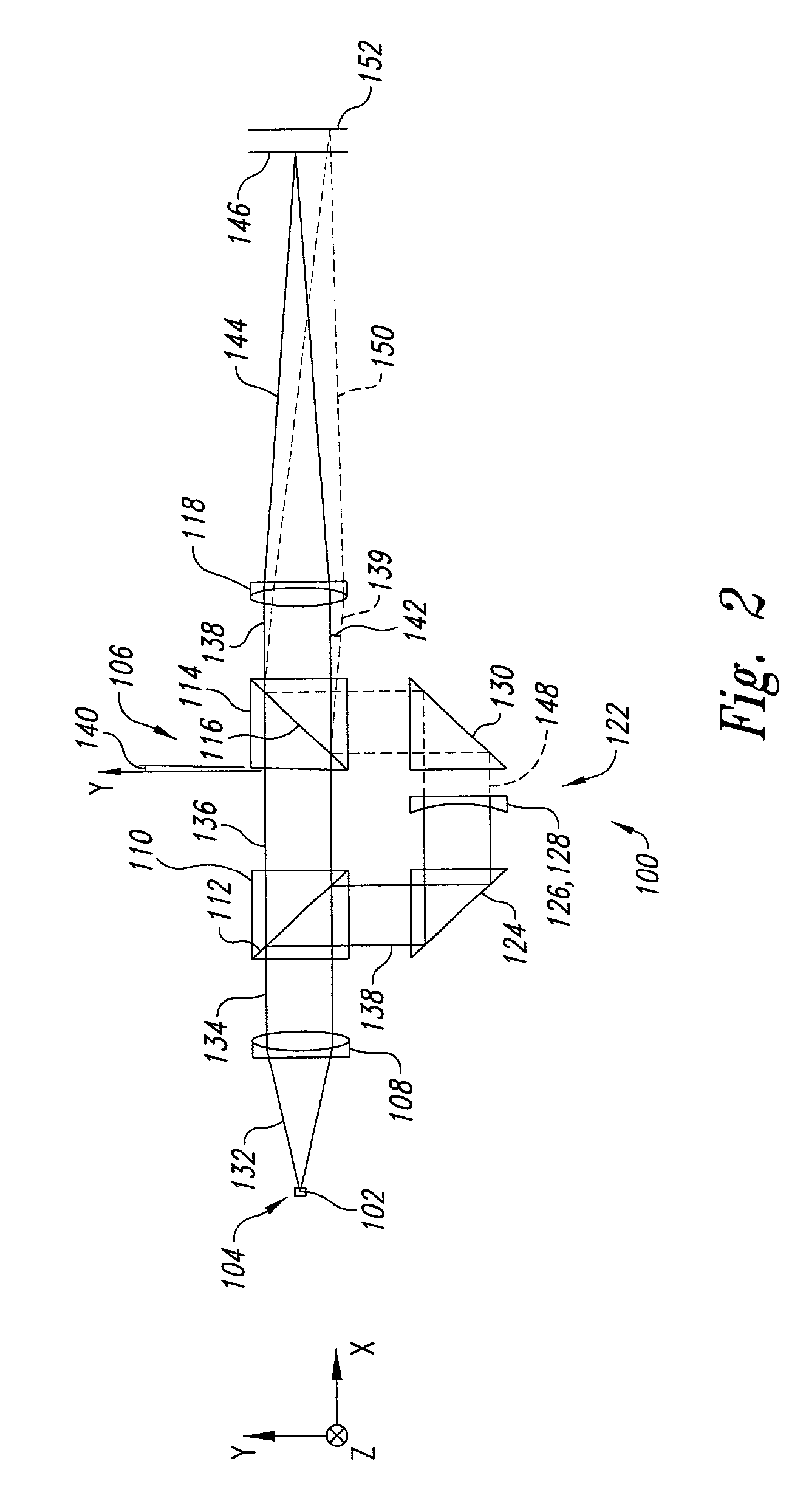System and method for high numeric aperture imaging systems
a technology of numeric aperture and imaging system, applied in the field of imaging systems, can solve the problems of low-light, high-resolution imaging, small depth of field in which to view target objects, loss of spatial resolution and decrease of signal-to-noise ratio associated with the image of target objects
- Summary
- Abstract
- Description
- Claims
- Application Information
AI Technical Summary
Benefits of technology
Problems solved by technology
Method used
Image
Examples
Embodiment Construction
[0030]Described herein are systems and methods for achieving and maintaining focus of target objects subject to low-light, high-resolution imaging. In general, light either reflecting, scattering or emanating from a target object is collected and split into two or more light components. The optical power levels of some, but not all the light components are then modified such that when the light components are recombined with an angular separation to form an image, each of the light components have differently positioned image planes where an object point of the target object is imaged.
[0031]For each image plane pair, a detector is such that each detector receives focused images from two object planes at the target object associated with the image plane pair of the detector to increase depth of field and focusing capability. In some implementations, focus is actively maintained though computer automated positioning of components. Other implementations actively maintain focus with a f...
PUM
| Property | Measurement | Unit |
|---|---|---|
| diameters | aaaaa | aaaaa |
| diameters | aaaaa | aaaaa |
| focal length | aaaaa | aaaaa |
Abstract
Description
Claims
Application Information
 Login to View More
Login to View More - R&D
- Intellectual Property
- Life Sciences
- Materials
- Tech Scout
- Unparalleled Data Quality
- Higher Quality Content
- 60% Fewer Hallucinations
Browse by: Latest US Patents, China's latest patents, Technical Efficacy Thesaurus, Application Domain, Technology Topic, Popular Technical Reports.
© 2025 PatSnap. All rights reserved.Legal|Privacy policy|Modern Slavery Act Transparency Statement|Sitemap|About US| Contact US: help@patsnap.com



